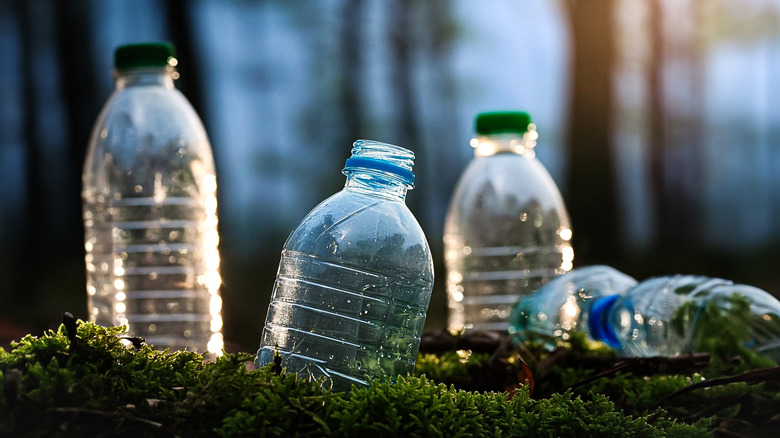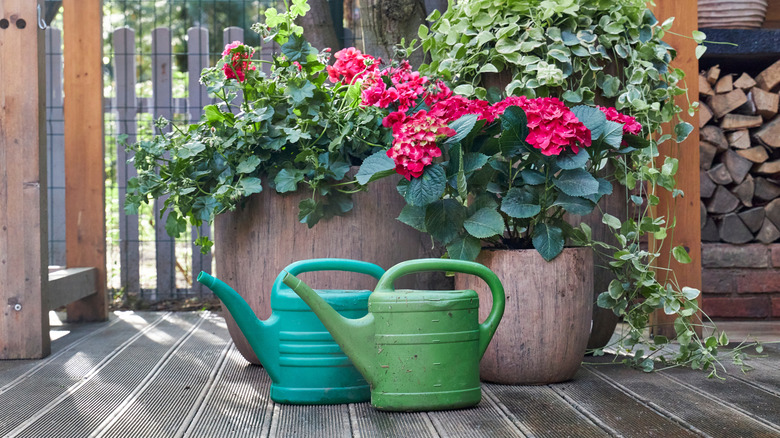Don't Throw Out Old Water Bottles: Reuse Them To Solve This Major Flower Pot Problem
Sometimes you want your garden, or even one of your house plants, to make a statement, which often equates to bigger is better. Whether it's looking for an indoor plant to fill out space or a large potted upgrade for your backyard, massive plants need massive pots to contain them. We all can appreciate a thriving bird of paradise plant towering over a living room or beautiful hydrangea bushes lining the walkway of your garden, but we also know how heavy they can be once they're filled all the way up with soil. Their ceramic and stone planters become even heavier when you add water — which can make moving them challenging. This is especially a concern for indoor plants that you might need to rearrange regularly for cleaning or other tasks.
The good news is that you typically don't need all that soil in order for your plants and flowers to thrive. In fact, too much soil can often do more harm than good, causing root rot due to too much water. So why not save a little space? There are plenty of hacks out there to fill in an oversized planter and create a little negative space where soil would typically be — but our favorite is reusing old water bottles. By saving up single-use water bottles or other large plastic containers, you can lighten your planters, keep plastic out of landfills, and save money on expensive soil. This project also adds to the many ways you can make your garden more sustainable.
How to do it right
There are a lot of materials you should never use to fill the bottom of large planters. Not only can some materials block drainage completely, others may absorb moisture and cause water to pool near the root — a major no-no for any plant or flower. Plastic water bottles are perfect because they are both small and rigid enough to prevent major issues from occurring. So how do you attempt this method correctly? First, gather your used plastic bottles and make sure they are empty and clean of any liquid that might attract pests. Make sure the caps are also secured tightly to the water bottle to keep air in and prevent them from collapsing. Then, fill as much of the planter with bottles as possible for what plant is going to be housed in it.
In order to know exactly how many water bottles to use and how much soil to put in, you will need thorough information about your plants root system. Make sure you know how much soil depth your plant needs and ensure there is that much room above the water bottles to guarantee that the roots have all the space they need to thrive. When in doubt, using shallow-rooted alternatives is a safe way to get the look of a large planter without the concern of soil depth.It's also a good idea to add an additional moisture absorbing substance, like pumice, on top of the water bottles to help prevent water from collecting in any crevices.

